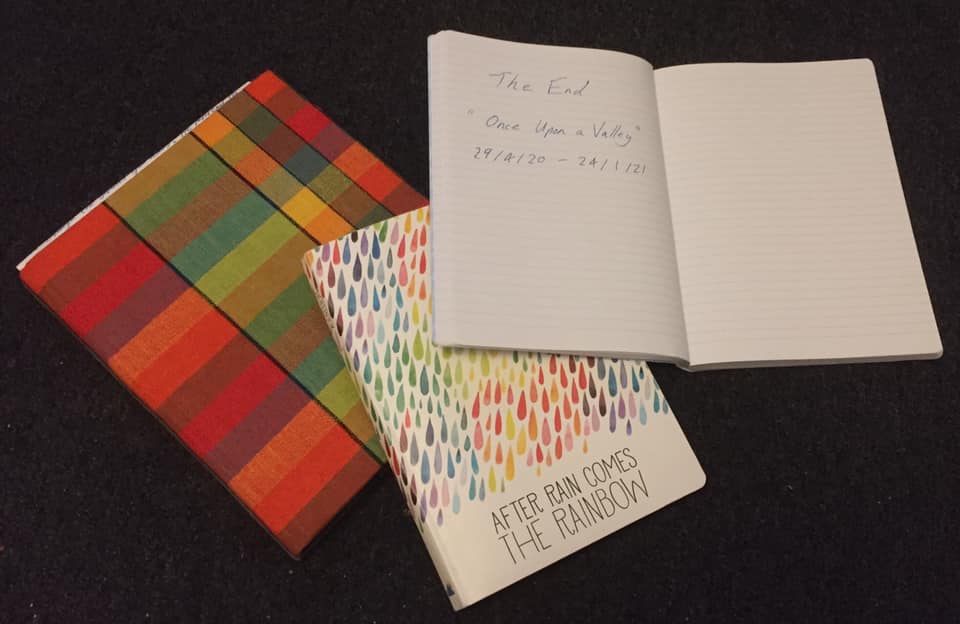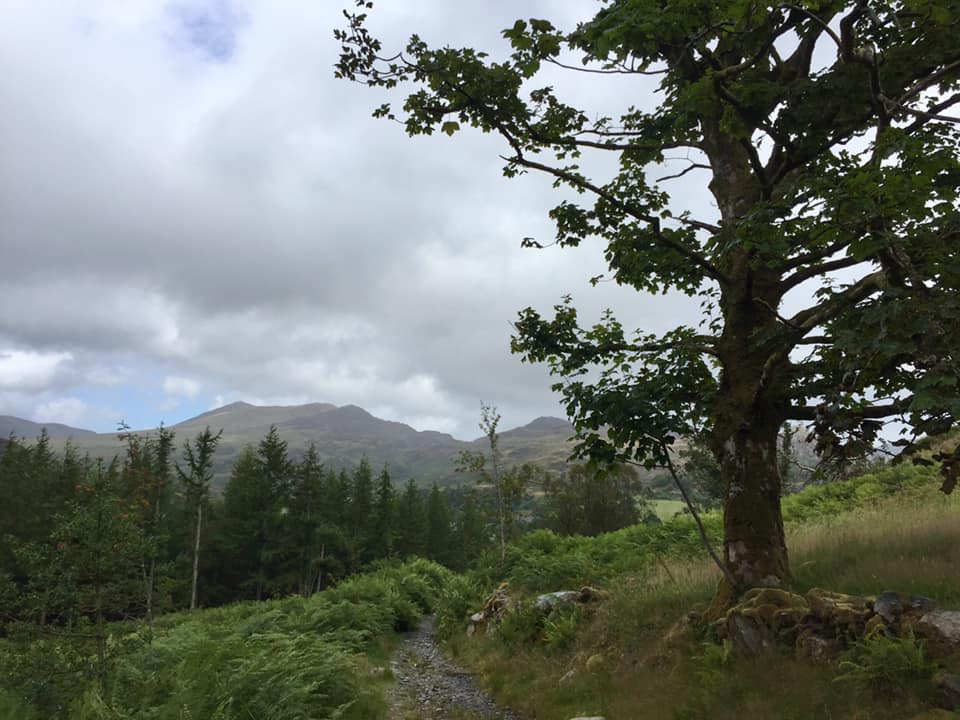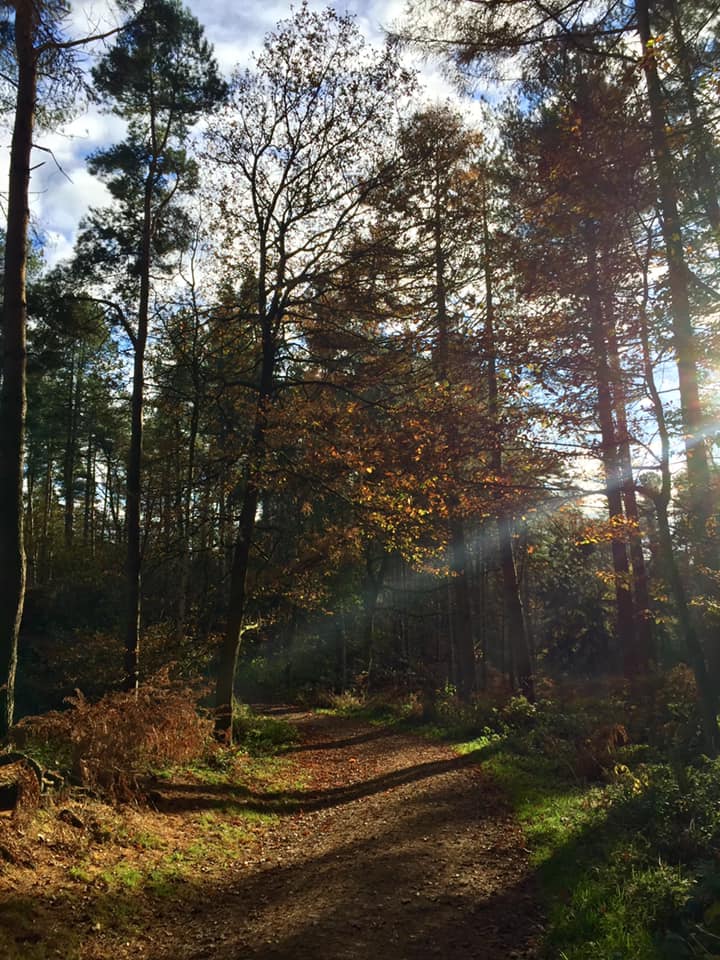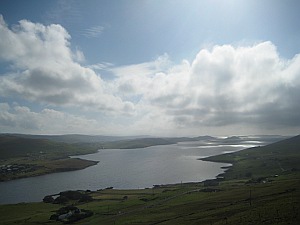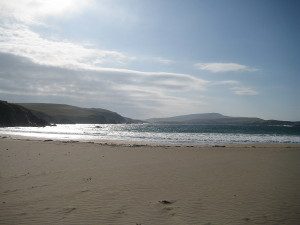Right now under lockdown (as everywhere tries to cope with the impact of COVID-19) I can’t make a planned trip to my beloved Northern Isles. But that can’t stop me remembering past visits. So here’s my first ‘proper’ trip, when I well and truly fell for the place.
Arrival
Grey shards of rain moved across the distant little grey town and I held onto the deck railing. I had awoken early on the overnight ferry from Aberdeen, and eager to catch my first glimpse of Shetland, had gulped down a fried breakfast before heading out on deck. The weather made this not the most auspicious of arrivals. Indeed, Lerwick looked positively dowdy compared to the colourful little towns of Ireland that had been my regular destination for the previous few years. The ship sounded its deep horn to announce its presence, the boom echoing back from the hills.

We sailed past the centre of the town to its northern outskirts, where the ferry docked between a floating dry dock and a rust-streaked cargo ship. A modern slab-sided hotel faced the quayside, an assortment of industrial units and a nearby power station completing the scene. Definitely not the most inspiring start! Still, I made my way back inside to retrieve my luggage from my cabin.
My fellow passengers from the ship were quite a mix. An assortment of locals, several businessmen, a group of loud American golfers intent on ticking off the ‘furthest north’ courses, and a very few other tourists. These all quickly dispersed in unknown directions, and I stood alone in the terminal building, unsure what to do. It was only eight and I didn’t expect the town would yet be awake. I took my time inspecting the tourist leaflets and bus schedules before heading out.
A walk into town
Thankfully the rain had stopped, but it was distinctly breezy, and the grey skies seemed to complement the housing estate and industrial units which the road skirted. Quite amusingly, after the 14-hour crossing, it now seemed the land was moving like the see as I walked along! After a mile I reached the town centre proper. Sure enough most shops still weren’t open, apart from the post office and a newsagent. It took me just ten minutes to walk the length of the ‘main street’ (what I now know is called Commercial Street). A few people were around though, hurrying purposefully against the wind, and I wondered what place I had chosen for a break.

Things were looking better an hour later; ensconced within a snug cafe, reading a ream of leaflets plied on me from the friendly tourist office a few doors away. (There was no point in picking up a morning paper; a quick foray into the newsagent had shown them to be a day old.) The coffee was welcome but the huge slab of cake even better. The locals around me were engaged in their own good-natured chatter. To me the Shetland accent sounded a beautiful lilt, to my ears like a mix between highlands and Scandinavian. But I could also hear some talking in a dialect that also sounded wonderful but was completely foreign to me.
“My, are you just off the day’s boat?” the waitress asked, catching sight of my well-loaded rucksack squeezed under the table. “Are you waiting for da bus?” I replied in the negative, naming my guest-house for the night in Lerwick. Her hand flew to her mouth almost as if in horror. “But they’ll be aye wondering where you’re at. They’ll probably be checking with da ferry to see if you missed it!” And for good measure, to spur me to action, she flapped the menu at me.
“Da Toon”
With three days gone I had grown used to life in Lerwick. People I barely recognised seemed to remember me and passed their hand in greeting as I passed, and I never tired of ambling around the little town. My first impression had been right; Lerwick wasn’t the largest of places but I never tired of exploring. Sometimes I walked up and down the hidden lanes behind Commercial Street; at other times I would stroll along the waterfront, taking in the constant procession of different vessels.

On my first evening, as suggested by my host, I took a walk past the ‘lodberries’ and around The Knab. This is a rocky promontory circled by a footpath, where seals occasionally slumber on the rocks below. I watched the ferry leave on its way back to the British mainland. It was quite strange but satisfying to think that was the link to the rest of the world sailing out.

When some of the frequent showers swept in, the weather would drive me into the Shetland Museum (back then part of the library), one of the cafes or inevitably, the friendly little bookshop. And there was plenty of time for another chat with the amiable staff at the tourist information centre. But it was time to get out of the capital and explore beyond.
Puffins…
The wind was gusting as I started up the winding lane towards Sumburgh Head, where the land ran out. The local bus grumbled slowly away on the main road behind me, and I kept an eye on the skies; it would be three hours until there was transport back, and little shelter lay around. Actually, correct that; in the exposed treeless landscape there was no shelter to be had!

The road ended by a weather-beaten lighthouse in an old scratchy car park, with a view to the horizon. (Note: this in now a more upbeat visitor centre!) The sea was picking up with an ominous swell, white-caps and an unpleasant grey colour; a small trawler rolling awkwardly as it headed further out. But then, just on the shoulder of the cliff, was what I had come to see. As had been predicted, cluster of puffins covered the area; making their way in and out of their burrows, plunging into the sea for sand-eels, or landing back on the cliffs… Although to be honest, puffins don’t so much land as crash. As tame as you like, any number of them landed within a few feet of me.
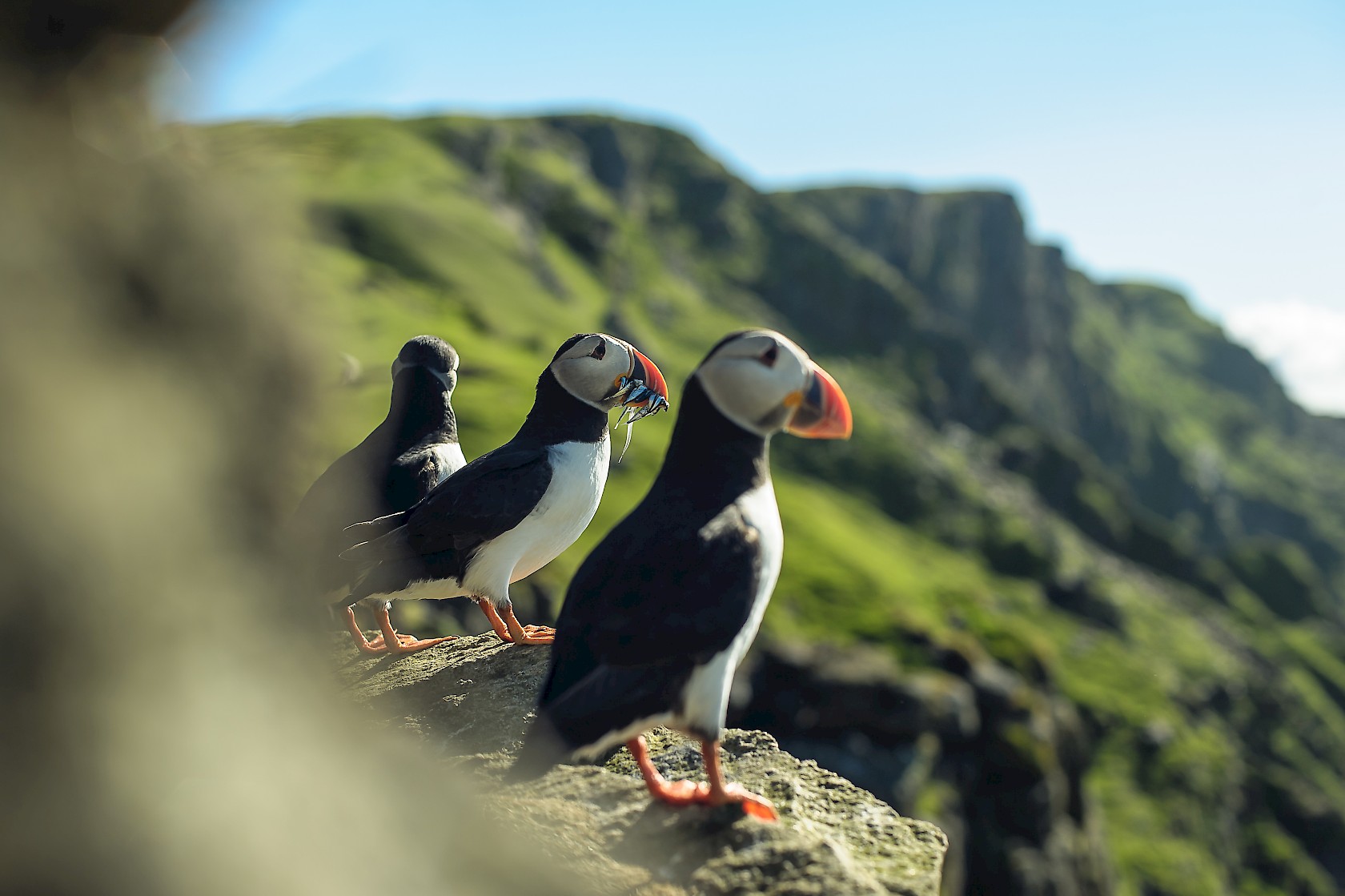
I could have watched the loveable little birds – clowns of the sea – for ages, but the increasing clouds spurred me to retreat. The bus still wasn’t due for ages, but the map spoke of a general store a few miles away, where I could probably grab a coffee while I waited. I hadn’t been walking for a few minutes when the rain started to spatter and a car pulled up beside me. I vaguely recognised one of the staff from a shop in Lerwick. “Need a lift?” That became a familiar litany throughout my trip. I’m not suggesting you could or should rely on hitch-hiking to get around (you can go a long time without seeing a car!) but it was certainly welcome at the time.
Beaches…

Some days later, I sat with my toes in the sand of a pristine beach, the sun blazing high overhead, a strong wind in my hair, and the sound of gentle waves all around. But perhaps that should be two beaches. I was halfway across a ‘tombola’ – a broad ridge of sand connecting an offshore island to the mainland in all but the highest of tides. Before me was a north-facing bay; or I could turn and watch the waves in the south-facing bay.
A few cars arrived on the distant small car park; some local families piled out with their young children, but they were all but lost in the vastness of the landscape. A short while later and a Leask’s coach drew up and disgorged a complement fresh off a cruise ship. But even these were barely noticed, most taking photos from the grey of the car park, a few gamely trudging over the beach for a more detailed view. (Tourists were not exactly a large quantity in the isles then; even now things thankfully never get as hectic as on Skye). Bored with sitting still, I trudged down to the waterline, and followed the feet chilling swash along to the island.

…And hills
One evening both the grey clouds and wind lifted, leaving a dry sunny evening ahead, with the northern sunset not due till 11. Following advice from where I was staying, I followed a track up to the top of the range of hills which formed the spine of the South Mainland. Now, islands are always hard-working places, and Shetland is no exception. The summit of the hill was marred by a huge transmitter and supporting infrastructure; the neighbouring hill by what I later learned were the ruins of a form RAF ‘listening’ post. Neither of those could detract from the view though.
Looking east, I was facing across the North Sea, the sky turning a deep purple with a creeping speckle of distant stars; occasional flashes of lights from cars on the main north-south road. Even better, looking west the sun was starting to lower in a molten pool of gold into the Atlantic. This was the ‘Simmer Dim’, the time of year when the sun barely sets. Vague shadows on the horizon were formed by the offshore islands, nearer to hand arcs of white carved by the sporadic beaches. There were no towns within sight; just a scatter of remote houses forming dispersed villages.

But I was not alone for long. Soon one of the inquisitive greedy little Shetland ponies joined me, hoping that I had brought some treats. I hadn’t, but that didn’t stop a compatriot joining it; and then ten more, who insisted on following me the entire way back down the hill. Fortunately they stopped at the gate and didn’t try to join me into the hotel bar!
People and place
I criss-crossed my way across the Isles. Now I was heading north, up the long spine which makes up the ‘mainland’, and onto some of the outlying islands. That included the beaches of Yell, enterprising Unst (home of everything ‘furthest North’), and the beautiful little Fetlar. I rented a bike, sometimes used the sparse bus service, and cadged lifts here and there.

I stayed in B&B’s, a hostel, and some of the small hotels that somehow eked out an existence, and wondered what Shetland was for.
To be sure, some people worked in jobs connected with the oil industry. The money from that seemed to have been wisely invested, which I could see everywhere I went: the good quality of the island roads; the well-equipped schools; and a network of leisure centres. But beyond that? (This before the Internet started to bring more opportunities!)
There were certainly plenty of people working in fishing; but Shetland felt different from the Outer Hebrides where that was also true. Tourists certainly weren’t an essential part of the mix (still being quite a rarity), unlike on Skye which even then was something of a hotspot. Nor were other industries and farming as prevalent as on other offshore islands closer to the rest of the UK.

I asked my hosts the question one evening, over a pint of locally-brewed Simmer Dim ale: “What is a Shetlander these days?”
He scratched his head: “I’ve heard it said an Orcadian is a farmer who happens to have da boat, a Shetlander is a fisherman who has da bit of land.” He looked at his wife. “Or did I get that da wrong way round again? Either way, we’re all a bit of this and that; you aren’t just da one thing.”
Last Night

I ended up in Scalloway for the last few nights. This is a beautiful small town on the west coast, and is the original capital, complete with ruined castle, fisheries college, and a busy habour at the end of an inlet. One evening by one of the slipways I fell into conversation with a girl busy tinkering with an outboard engine, who I had met a few times at the local bar. I hadn’t started University myself, and asked whether it was difficult attending there from so far away.
I received the pitiful look my comment rightly deserved: “Been there, done that. BSc and MSc in Environmental Studies down in England.” After that, I hardly wanted to ask why she was poking around in a Honda that had seen its best days, but she took it on herself to continue. “There’s probably more overeducated people in Shetland than anywhere. I could get a better job elsewhere, and that’s for sure. But why would I want anything that took me away from this?” A sweep of her arm, clad in an oil-streaked yellow jacket, took in the town, the hills and patchwork of islands beyond.

Leaving, but not leaving
The ferry carved a white swathe across the calm waters as we left. Lerwick lay on one side, the sheltering isle of Bressay on the other. All familiar sights that I had explored on foot.

Again at the ship’s railings, I was in conversation with the ship’s purser, but I couldn’t resist breaking off for a last look at the landscape. The skies were again grey, the wind and the ship’s speed crackling the P&O house flag at the mast, but the conditions didn’t lessen the scene in my eyes. He chuckled and gave an open wave to a passing fishing boat, duly returned from a tiny wheelhouse.
“So. Da place has well and truly bitten you, hasn’t it?”
And I had to admit, it most certainly had.
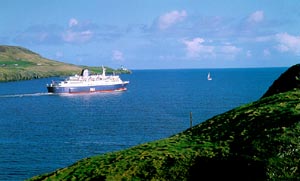
I may not be able to travel to Shetland for the moment, or to finish off the books I am writing that are set there – but as soon as I can and it is sensible I will do so. In the meantime, be kind to each other; better times will be ahead.

Read more about Shetland on my pages here, or for the official tourist board site click here.
Post created 06/06/20
